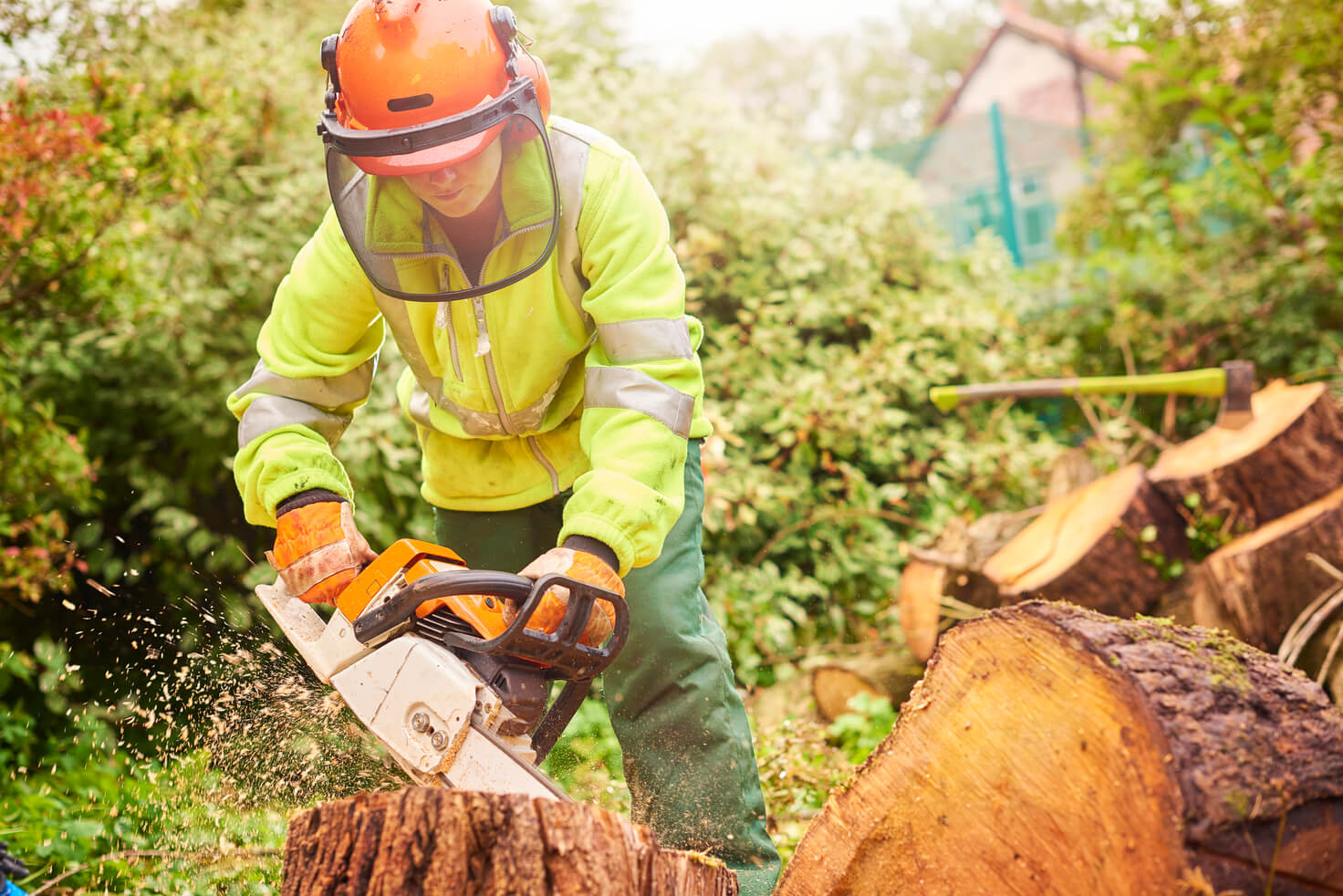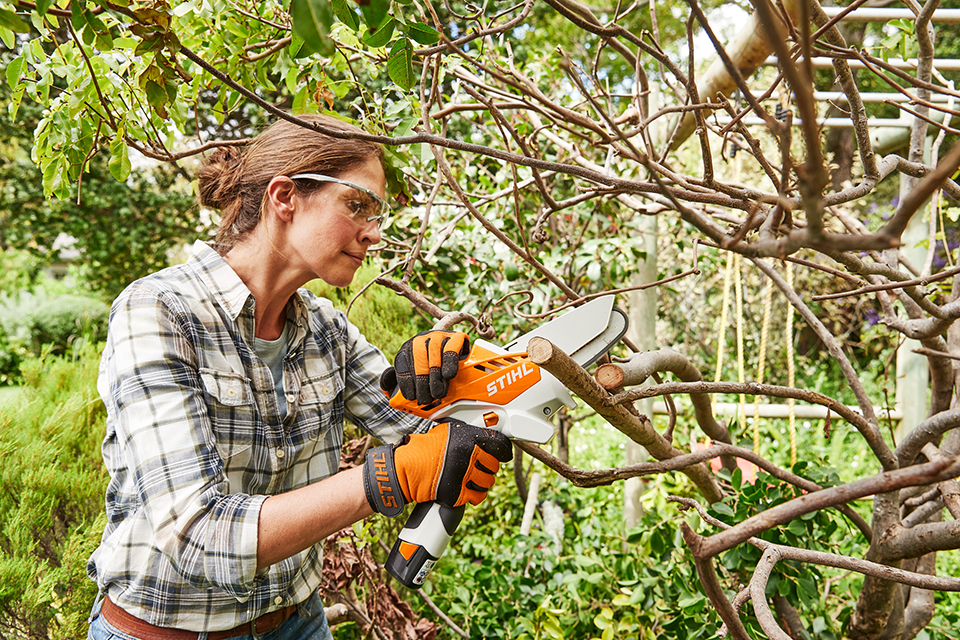If you’re a keen gardener or dabble in a little home landscaping, knowing all about chainsaws and their components is key. Different wood types, from softwoods like pine to hardwoods such as oak, require particular chains and bars for optimal cutting performance.
Efficiency aside, choosing the right chainsaw bars and chains is important for effective and safe woodcutting. A chainsaw bar supports the chain as it rotates and can greatly influence the cutting capabilities and limitations of the chainsaw. The chain, with its distinctive teeth patterns and gauges, is designed for specific cutting tasks and wood types. Together, the bar and chain determine how efficiently and precisely a chainsaw can complete a job.
Selecting the right equipment involves considering the wood’s hardness, the required cutting capacity, and the level of cutting precision needed. It’s essential to match chainsaw bars and chains that are compatible with your chainsaw model, as well as suitable for the type of woodcutting you plan to undertake.
Whether trimming small branches or felling large trees, the right combination ensures a smoother cutting process, reduces the risk of kickback, and extends the lifespan of your chainsaw equipment.

Understanding Chainsaw Bars and Chains
Selecting the appropriate chainsaw bars and chains is crucial for optimal performance and safety. The following breakdown provides detailed insights into their fundamental aspects, necessity for matching bars and chains, and their specific roles in chainsaw operation.
Chainsaw Bar Fundamentals
Chainsaw bars, also referred to as guide bars, are the elongated pieces of metal that guide the chain. The length of a chainsaw bar can range from small 25 cm bars for light work, up to over 90 cm for professional-grade logging. The bar length determines the size of wood the chainsaw can cut through. Bars also come with a nose sprocket, which aids the chain’s movement, and a chain gauge, which is the thickness of the drive links and needs to match the guide bar’s slot to ensure a snug fit.
Chainsaw Chain Essentials
The chainsaw chain is composed of repeating segments that include cutting teeth and drive links. The pitch refers to the measurement between any three consecutive rivets divided by two, indicating the size of the chain. The gauge, which is essentially the thickness of the chain, must correspond to the bar’s groove.
Chainsaw chains vary from low-profile chains for safety to full-chisel and semi-chisel chains which are designed for different levels of performance and precision. Maintaining the correct tension and regular inspection are important for safety and efficiency.
Matching Bars and Chains
For the best cutting experience, it is important to match chainsaw bars and chains accurately. Utilising a chain with incompatible pitch or gauge can result in poor performance and pose a safety risk. Different materials, such as carbide chains, and designs, like narrow kerf chains, cater to specific cutting needs.
A matched bar and chain provide balanced wear and a smoother cutting chain motion, contributing to precise cuts and the longevity of the chainsaw. Furthermore, variations like ripping chains and full skip chains are available for specific uses, such as cutting along the wood grain or for faster cutting tasks with more waste removal, respectively.
Key takeaways:
- Proper matching of chainsaw bars and chains is vital for woodcutting tasks.
- The wood type dictates the choice of chainsaw equipment.
- Compatibility with the chainsaw model ensures safety and effectiveness.
Selecting the Right Equipment for the Job
When it comes to working with a chainsaw, the correct bar and chain combination is crucial for handling different wood types with both efficiency and safety.
Considerations for Different Wood Types
Different wood types present unique challenges, hence the bar and chain on a chainsaw have a significant impact on the cutting performance. Hardwoods like gum and ironbark require chains with durable, sharp-cutting edges, while softer woods like pine demand less aggressive chains to prevent excessive wear. The size of the wood is equally important; larger diameters necessitate longer bars for effective cutting.
Factors to keep in mind include bar length, which should match the wood’s thickness, plus chain type and sharpness. Kickback, a common hazard, can be mitigated by using a chain with low kickback potential, especially for less experienced users.
Specific Chains for Specific Tasks
Choosing the right chainsaw chains for specific tasks goes beyond just the wood type:
- For pruning, a lightweight chain with smaller teeth enhances manoeuvrability and precision.
- Ripping chains are ideal for cutting wood parallel to the grain, which is a specialised form of cutting requiring precision and correct chain orientation.
Homeowners and occasional users might opt for standard chains, which suit a variety of tasks but have a tendency to become dull with heavy use. Safety precautions must be prioritised; always consult the chainsaw manual for proper adjustment and maintenance to increase the chainsaw’s lifespan and ensure safety.
Both Husqvarna and Stihl provide a wide selection of chains for different tasks, allowing for efficiency in cutting length and construction, along with specialised chains for carving. Specialty chains might be considered overkill for occasional use, but they offer enhanced versatility for those with more experience. When buying a new chain, it is valuable to consider not just the different lengths but also groove size, weight, and materials to ensure an efficient and safe chainsaw operation.
Conclusion
In selecting the appropriate chainsaw bar and chain, one must assess the wood type and cutting requirements. The durability of a chainsaw bar and the precision of the cutting chain are paramount for efficient and safe operation. It’s crucial to match the bar length to the task at hand and ensure the chain is designed for the specific wood’s hardness. Regular maintenance and accurate matching to one’s chainsaw model will result in optimal cutting performance and prolong the equipment’s life.

